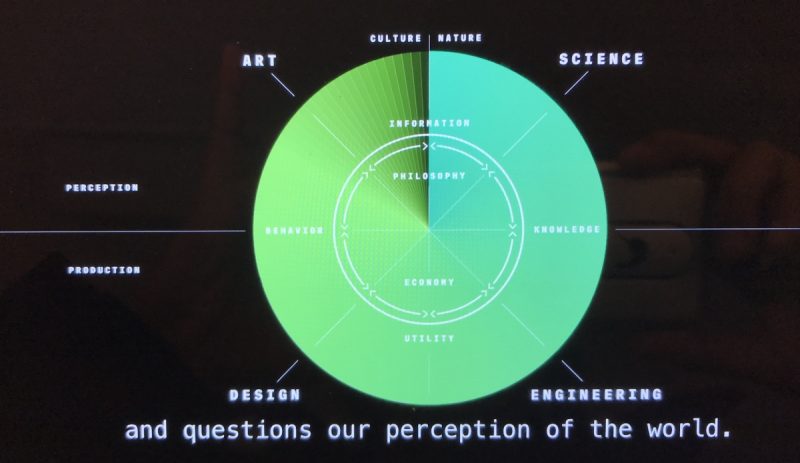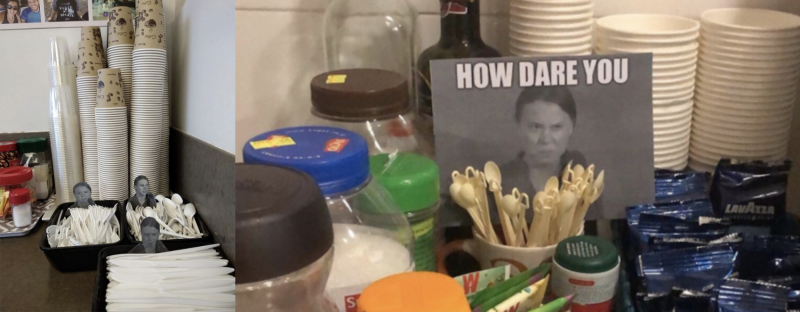Transdisciplinarity towards designing for and with nature.
Posted on December 16, 2019All these advances in new materials and alternative ways of the market economy developed are stemming from alternate ways to view the current counterproductive model of the world, which is not working. Leaves me fascinated by the relationship between nature and human. Is it transactional? Emotional? Extractive or deeply rooted in culture are some thoughts I explore in this post,
In their book Natural Capitalism Paul Hawken, Hunter Lowens and Amory Lovins define [1] Natural capital is a way of thinking about nature that provides a flow of benefits to people and the economy. It consists of natural capital assets – such as water, forests and clean air. … These provide people everywhere with the means for healthy lives and underpin all economic activity.
[2]Natural capitalism consists of 4 components:
1. Resources optimization: Resources utilization optimized through fundamentally reducing/redesigning the technology, manufacturing, and Design of the system built by/upon resources.
2. New models of production: Shift to mimicking nature to and promoting circular models of zero waste production, so not just reducing waste but not creating waste in the first place. Nature takes care of its waste as it degrades and has a life cycle.
3. Promotion of service-based economy:
Which we see currently was predicted to reduce ownership; hence people would own less and share more in a service economy hoard less individually.
4. Investing in natural capital:
Natural resources are a prime point for resource optimization, and utilization so more is invested in it. Significant gains in resource productivity require that the right steps taken in the right order. Small changes made at the downstream end of a process often create far more substantial savings further upstream. In almost any industry that uses a pumping system, for example, saving one unit of liquid flow or friction in an exit pipe saves about ten units of fuel, cost, and pollution at the power station.
So primarily, whole systems working towards this shift will ensure and blossom this new wave of capitalism. Natural capitalism dawns out to be this big utopian idea that seems to exclude how this shift will affect culture given changing the market itself is a long and rigorous shift into new ways of thinking and working.
However, utopian concepts such as these often leave me ten thousand miles up in the air. They get me thinking, how will a system such as this fit in different cultures and contexts?
Recently watching the documentary series Abstract[3] Neri Oxman architect, biologist, designer and associate professor at the MIT Media Lab talks about her work and process at the Mediated Matter lab. She works at the intersection of science, art, design, and philosophy. She is by her definition, naturing or mothering nature. She says nature often is seen as an entity that should stay untouched; however, in times like these, we need to strengthen nature through science and technology and different ways of cohabitating them. What stood out most for me was how her research on the material could translate to everyday objects. She states, ‘all biomaterials could replace today’s plastic.’[4] She outlines her process of transitioning from one discipline to another through this map :

Fig: Neri’s design process as shown in the documentary Abstract: Art of design 2019
Her positioning of design as the third sector of her process is intriguing-” Design sets culture and behaviour into context.”[4] she states. Which, in hindsight, feels, of course! However, this radical insight seems to only be possible at a multidisciplinary exploration of disciples.
These innovations are happening within the confined walls of highly specialized disciplines or experts; It is not inviting a broader conversation around a human-nature relationship, how might the new form of capitalism emerge if people do not know about it? When can I start using these bioplastics developed by Neri? These questions are valid, and currently, the pace of innovation is faster than the way the market is structured. Transdisciplinarity approach is required not only in practice but even to identify leverage points within the system to nudge behaviour.
The behaviour has a dominant role to play when talking about nature and ecology. David Hagmann, in the article, the hidden cost of nudging outlines that nudges might fail to work if people do not see any alternatives to the crises. That is part of the behavioural narrative around embracing green practices.[5] But what could be those as I sense make;
Value association
In India, individual trees and animals are sacred, and the rituals around it make it habitual to presence outside every temple. So in a way, every animal is considered sacred and fewer trees, so does it mean the relationship we have with these trees and animals is purely extractive? Well, at least to the ones in the religious premise are not. We do not worship the same way we use to.
Then how we assign values and that in turn shifts our perspective on one of the theories of natural capitalism-these values helps us use these resources effectively, often preserve them or keep them as artifacts of worship. Even our behavioural tendency to assign value to inanimate objects is fascinating as it helps us to view it on higher ground. What could do an equal role as did folk narratives of religion in olden days?
Social accountability
Secondly, an insight that highlights the importance of guilt.
An office experiment run called Greta Shaming[6]. The experiment uses pictures of Greta, a climate change child activist, to be placed near the coffee spot at office, only to portray social guilt within the office mates that the child is asking them to stop single-use plastic consumption. It is simple yet effective just to have a photo of Greta hanging there and making people feel cringy about using plastic. Simply shows how guilt is useful in shifting our viewpoints on mindfully using resources.

Fig: Greta Thunberg’s cutout pictures placed near single-use plastics at the office kitchen stall.
Systemic value
An excellent example of a systemic change that took place at a city level on waste management and towards zero waste is Pune, a city in western India.
In 2011-2012 the city’s municipal government decided to ban single-use plastics and restricted their use even in waste collection. The waste collection was made more strict by re-employing the women who were picking up waste on a daily wage to making them permanent employs of the city with uniform and waste carts.[7] A door-to-door collection service operated by a cooperative of almost 2,000 grassroots recyclers in Pune, India—now part of the city’s waste management system—diverts enough waste to avoid 640,000 tons of greenhouse gas emissions annually[8].
 Fig: Pune waste picker association women are showing their new uniform and ID’s as they are now govt employees and not contractors.
Fig: Pune waste picker association women are showing their new uniform and ID’s as they are now govt employees and not contractors.
I still remember the transition from plastic use to ban was so done in a manner to hold an individual accountable through a monetary fine. The service created the waste pickers to live in dignity and not in the service of residents. It encouraged waste segregation’s primary mode of them accepting the waste to be thrown by residents. What that human to human interaction ensured was accountability to have segregated waste and the feeling of guilt if it was left undone. By building mandates into housing cooperatives, to have a wet waste compost unit, they were able to bring the onus of accountability of waste segregation on not only an individual but a housing society in general -leaving the city with only dry waste to take care of. A systemic model resulted in Pune becoming a model city to walk towards the path towards zero waste city.
[9]Study after study has shown that reaching the goal for which we humans have placed our entire planet at risk—economic escalation and personal wealth—does not even make us happy. Above a certain amount needed to maintain a roof over their family and put food on the table each day, human beings in every country surveyed are not made happier by more material goods, even in significant amounts. What does make us happy are the ideals promoted by almost every ethical tradition known: belonging to a community, enjoying good health, sharing, loving and being loved, having access to nature, making a meaningful contribution. When we envision the real limitations, responsibilities, and mystery of living on the earth, we will begin to experience far more fulfilling lives than the excessive acquisition of material possessions can ever provide.
So then what does it mean to design a green revolution through replicating models through a transdisciplinary lens? There is a gap with the discipline focused interventions taking place how can design then to Neri’s point fit this urgency into cultural context and natural behaviour for people to adopt? Does natural capitalism need to move forward into a more digestible concept? Do Neri’s materials and work be more accessible and open for people? Do we need to Greta shame people at the office? Or is it all of the above and more? As I ponder upon these thoughts, I am hopeful by working across disciplines; these barriers will close.
Works Cited
[1] The Next industrial revolution Book written by Paul Hawken, Hunter Lowens and Amory Lovins Natural
[2]“A Road Map for Natural Capitalism.” Harvard Business Review, July 2007, hbr.org/2007/07/a-road-map-for-natural-capitalism. Accessed 23 Oct. 2019.
[3][4]“Abstract: The Art of Design.” Netflix.Com, 10 Feb. 2017, www.netflix.com/watch/80237094?trackId=13752289&tctx=0%2C1%2Ced8ed198-69e7-46f4-9fae-3750b4e6a772-63712668%2C%2C. Accessed 17 Dec. 2019.
[5]Hagmann, David. “The Hidden Cost of Nudging.” Behavioural and Social Sciences at Nature Research, Springer Nature Ltd., 13 May 2019, socialsciences.nature.com/users/256491-david-hagmann/posts/48667-the-hidden-cost-of-nudging. Accessed 16 Dec. 2019.
[6]MCcool, Bill. “Office Workers Post Photos Of Greta Thunberg Near Single-Use Items To Shame Employees.” Dieline, Bill McCool, 12 Dec. 2019, thedieline.com/blog/2019/12/12/office-workers-post-photos-of-greta-thunberg-near-single-use-items-to-shame-employees?utm_source=DIELINE+MASTER+LIST&utm_campaign=4be249a2aa-EMAIL_CAMPAIGN_2018_11_03_07_13_COPY_01&utm_medium=email&utm_term=0_8fea6acfcb-4be249a2aa-230191017&mc_cid=4be249a2aa&mc_eid=8ad13fd388.
[7][8]Tangri, Neil. PUNE, INDIA Waste Pickers Lead the Way to Zero Waste.
[9]Truthout. “Beyond Recycling: On the Road to Zero…” Truthout, Truthout, 28 Oct. 2012, truthout.org/articles/beyond-recycling-on-the-road-to-zero-waste/
VS – Khyali Pulao